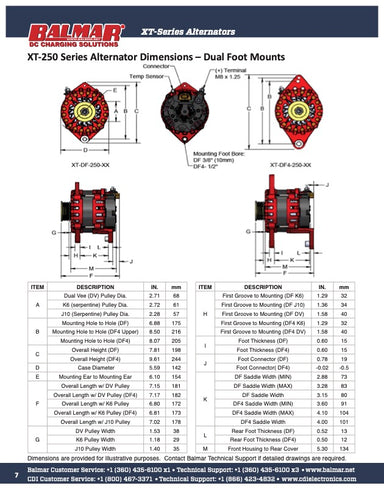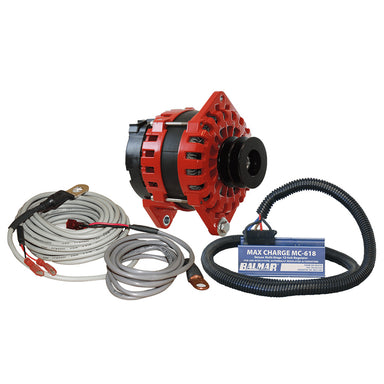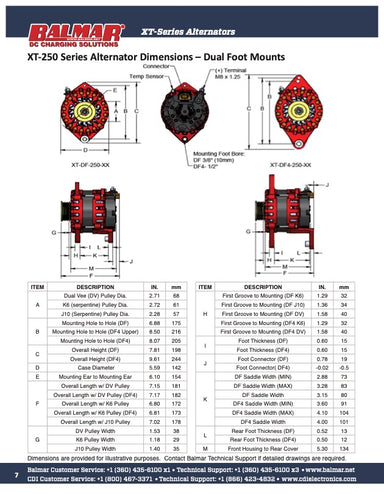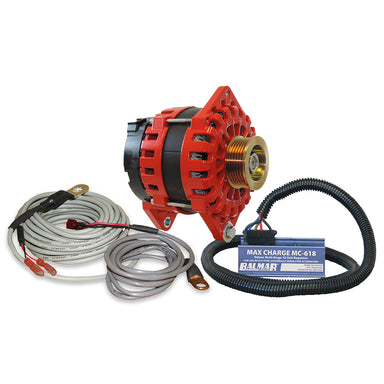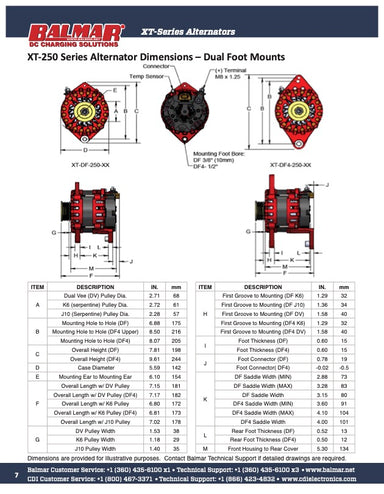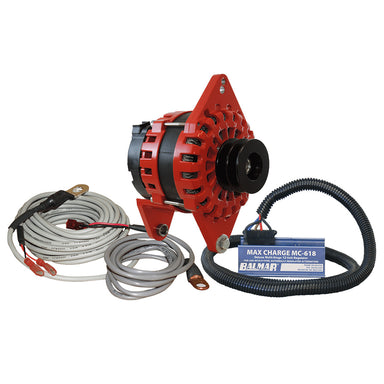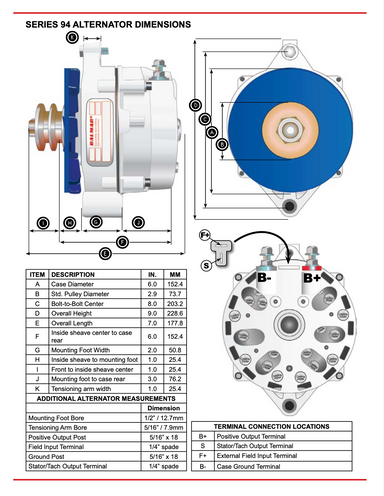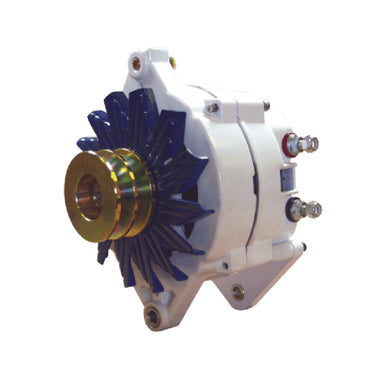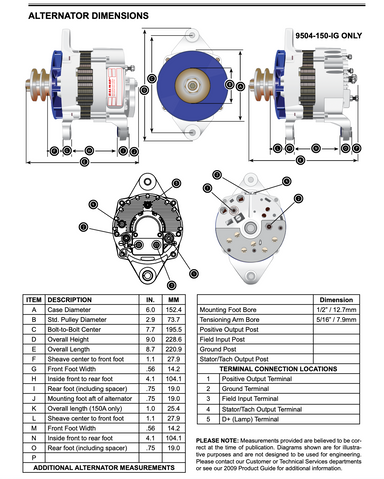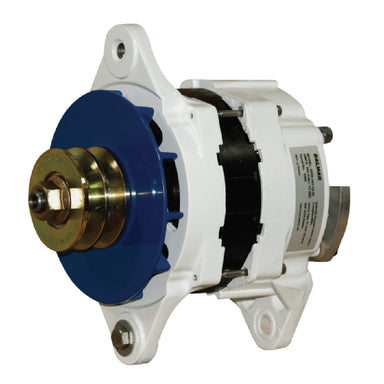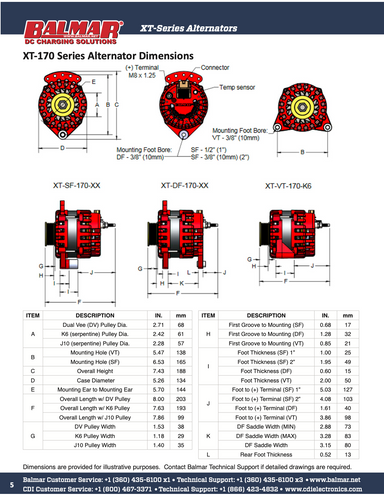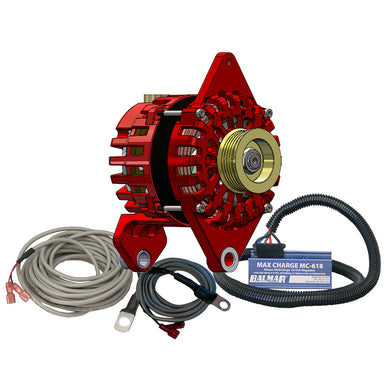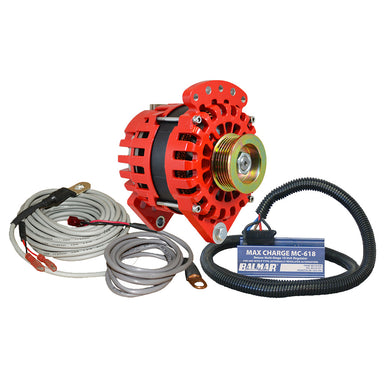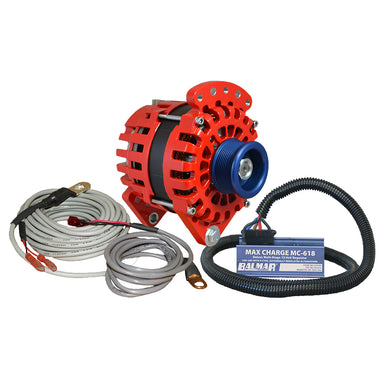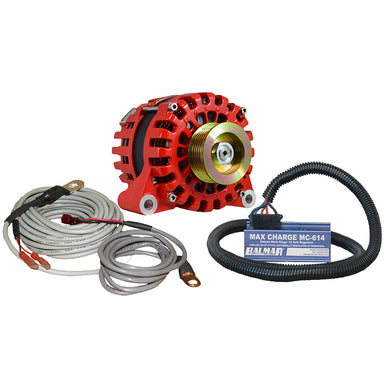Marine alternators are critical components in the electrical systems of boats and ships, playing an essential role in charging batteries and powering onboard electrical systems. These devices are engineered to tolerate harsh marine environments, converting mechanical energy into electrical energy through electromagnetism. They differ from automotive alternators in their durability and resistance to corrosion, factors that are paramount given the salty and wet conditions they operate in.
Selecting the right marine alternator requires understanding its compatibility with the boat's engine and the electrical demand of marine appliances. Boat owners often prioritize alternators with higher output capacities to ensure sufficient power supply and battery charging capabilities, especially during prolonged trips at sea. Additionally, marine alternators are designed to be efficient at lower RPMs, which is typical for marine engines, and to maintain constant voltage, which is essential for sensitive marine electronics.
Maintenance and proper installation of marine alternators are key to ensuring their longevity and reliability. Regular inspections are needed to check for signs of wear, corrosion, or belt tension issues. Appropriate wiring and correct sizing of the alternator ensure optimal performance and prevent potential electrical hazards. The integration of a marine alternator into a boat's electrical system allows for a reliable source of power when you need it the most.
Shop Balmar marine alternators →
Fundamentals of Marine Alternators
Marine alternators are essential for charging a boat's battery system and providing power to electrical equipment. They must be robust and resistant to the harsh marine environment.
Working Principle
A marine alternator converts mechanical energy from a boat's engine into electrical energy through electromagnetic induction. As the engine rotates the alternator's pulley, it drives an internal rotor to produce a magnetic field. This field interacts with stationary windings, called the stator, generating alternating current (AC). A rectifier then converts the AC to direct current (DC) suitable for charging batteries and powering the boat's electrical systems.
Key Components
-
Rotor: The rotating part that creates a magnetic field.
-
Stator: Stationary copper windings where electricity is induced.
-
Rectifier: Converts AC to DC.
-
Voltage Regulator: Maintains the output voltage at a steady level.
-
Pulley: Connects to the engine via a belt to drive the rotor.
Alternator Performance
Marine alternators are critical components in the electrical systems of vessels, with performance depending on their electrical output, efficiency, and cooling systems. These parameters directly impact the reliability and functionality of marine craft.
Electrical Output
Marine alternators are rated by their maximum amperage output, which is crucial for meeting the electrical demands of a boat. Output capacity varies with engine speed, with higher RPMs delivering higher amperage.
Efficiency
An alternator's efficiency is its ability to convert mechanical energy into electrical energy without excessive heat generation. A high-efficiency alternator retains more of the engine's power for propulsion. Efficiency ratings may fall between 70-90% for quality marine alternators.
Cooling Systems
The cooling system is essential for maintaining an alternator’s performance by dissipating heat. Marine alternators typically use air or liquid cooling. Air-cooled alternators are common but can be less effective in high-temperature environments compared to their liquid-cooled counterparts, which use a coolant to maintain optimal operating temperatures.
Installation and Mounting
Proper installation and secure mounting of a marine alternator are crucial for reliable operation. Incorrect mounting can lead to premature failure or decreased efficiency.
Mounting Foot Types
Marine alternators typically have either a single-foot or dual-foot mounting configuration. Single-foot mounts are common on smaller engines and feature a pivoting arm, while dual-foot mounts provide more stability and are used on larger engines. Compatibility with the engine bracket must be confirmed before purchase.
Positioning
The alternator should be positioned to prevent contact with other components and allow for adequate airflow and cooling. It should be close enough to the battery to minimize voltage drop but far enough to avoid excessive heat transfer. Aligning the pulley properly with the drive belts is critical to prevent undue wear.
Wiring Guidelines
When wiring the alternator, make sure to use appropriately sized wiring depending on the alternator's amperage and distance to the batteries. Refer to your alternator's manual and ABYC guidelines to appropriately size your wiring.
All terminals should be tightened to manufacturers’ specifications and insulated to prevent shorts. Wires should be neatly routed, avoiding areas that may damage insulation due to heat or movement.
Vibration Isolation
To extend the life of the alternator and maintain electrical connections, use rubber mounts or isolation pads to reduce vibration. Double-check that all mounting hardware is properly torqued to reduce the chance of movement and wear.
Maintenance and Troubleshooting
Maintaining a marine alternator is critical for ensuring reliability and performance at sea. Troubleshooting common issues can prevent costly repairs and replacements.
Routine Inspections
Frequency: It is advisable to inspect the alternator monthly and more often under heavy use. Ensure the belt has the correct tension, as a loose belt can cause slippage and undercharging. Look for any signs of corrosion or loose connections, and use a multimeter to confirm that the alternator output matches specifications.
Common Issues
A primary concern in marine environments, corrosion can lead to poor electrical connections. An alternator running too hot may indicate a malfunction or an overburdened electrical system.
Battery not charging? This can be caused by worn brushes or a faulty voltage regulator.
Solutions:
Remove Corrosion: Clean terminals and apply a corrosion inhibitor.
Cooling: Check for proper ventilation to prevent the alternator from overheating.
Replace Parts: If brushes or the regulator are defective, replace them.
Repair Vs. Replace
Marine alternators can often be repaired, but evaluating the cost against a new unit is crucial. If the damage is localized, such as a failed bearing or worn brushes, a repair may be cost-effective. However, when multiple components are affected, or the alternator is aged, replacement might be the more reliable option.
Considerations:
Check if the alternator is still under warranty. Also, consider if a higher capacity alternator is needed to meet electrical demands.
Selection Criteria
When choosing a marine alternator, several critical factors need to be carefully considered to ensure that it meets the specific needs of a marine engine and electrical system.
Compatibility
The selected alternator must be compatible with the engine's make and model. One should check the mounting configuration and the belt type to ensure a proper fit. Additionally, the electrical connections should match the vessel's system with the correct voltage and amperage.
Capacity and Size
Capacity is measured in amperes (A) and dictates how much electrical power the alternator can generate. It is essential to select one that can sustain the vessel's electrical demand. Size also matters; the alternator must physically fit in the engine compartment without obstructing other components.
Smaller vessels usually demand 70-100A alternators. Larger boats with more demanding loads, or boats that want to charge large battery banks quickly, might need 100A or higher.
Brand and Manufacturer
It's advisable to consider reputable manufacturers who are known for quality and reliability. Durability in the harsh marine environment is a priority, so choosing a brand with solid warranties and support can be beneficial.
One of the leading brands of marine alternators for sailing and cruising boats is Balmar. Balmar is well-known for their reliable, high-output marine alternators.
Innovations and Advancements
The marine industry has seen significant advancements in alternator technology. These innovations enhance both the efficiency and the functionality of charging systems in maritime applications.
External Regulators
External regulators are installed separately from the alternator and allow for more precise control over the alternator's output. These devices can be programmed to tailor the charging phases to the specific needs of a boat’s battery bank which leads to more efficient charging and longevity of the batteries.
-
Adjustable Settings: Charging voltage, acceptance rate, float charge
-
Compatibility: Often universally compatible with various alternators
High-Output Models
High-output alternators are designed to accommodate the increasing power demands of modern marine vessels. They are capable of producing significantly more amperage than standard models, which is essential for systems with high electrical loads.
-
Specifications: Amperage outputs ranging from 100A to 300A
-
Key Advantages: Capable of supporting extensive electronic arrays, multiple battery banks
Frequently Asked Questions
This section addresses common inquiries about marine alternators, focusing on battery compatibility, selection, installation, wiring, and technical specifications.
Can I charge lithium batteries (LiFePO4) with my marine alternator?
Yes, you can charge lithium batteries with a marine alternator, but it's important to be aware of several challenges and requirements. Charging LiFePO4 batteries differs significantly from charging traditional lead-acid batteries, mainly due to the specific needs of lithium batteries.
The ability of LiFePO4 batteries to accept charge at a much faster rate is a double-edged sword; it allows for quicker charging but can also impose a heavy load on the alternator, potentially causing overheating or failure if not managed correctly. Additionally, LiFePO4 batteries' temperature sensitivity requires integrated temperature monitoring to ensure safe charging under various conditions.
To navigate these challenges successfully, a smart alternator regulator compatible with LiFePO4 batteries is essential. Alternators might need to be upgraded or fitted with external regulators to handle the high charging currents without sustaining damage. Implementing temperature sensors and safeguards to halt charging in extreme conditions is also critical for battery safety and longevity.
Can I charge both a lithium bank and a lead acid starter battery with my marine alternator?
It is possible to charge both a lithium battery bank and a lead acid starter battery with a single marine alternator, but this requires a particular setup that can connect the two battery types safely. One common setup is to charge either your lithium bank or your lead acid starter battery directly with the alternator, and then to use a DC-DC charger to connect the two banks together and charge one from the other.
How do I choose the best marine alternator for my boat?
Selecting the best marine alternator involves considering the boat's electrical load requirements, the type of batteries used, the engine's maximum allowable alternator size, and the available mounting options. Need help choosing the right marine alternator for you? Contact us for help.
What are the steps to replace a marine alternator?
To replace a marine alternator, one must disconnect the battery, remove the belt and existing alternator, install the new alternator, reattach the belt, and reconnect the battery. Always refer to the specific installation instructions for the alternator being installed.
Where can I find a wiring diagram for installing a marine alternator?
Wiring diagrams for marine alternators can typically be found in the alternator's installation manual, the boat manufacturer's service manual, or through the alternator manufacturer's customer service resources.
What are the characteristics of high-output marine alternators?
High-output marine alternators are characterized by their ability to produce a greater amperage output compared to standard alternators, often featuring advanced cooling systems, durable construction, and internal voltage regulators for high-demand applications.
How do I determine the correct charging voltage for my marine alternator?
The correct charging voltage for a marine alternator is determined by the specifications of the batteries being charged. Consult the battery manufacturer's recommendations to set the appropriate voltage output from the alternator.
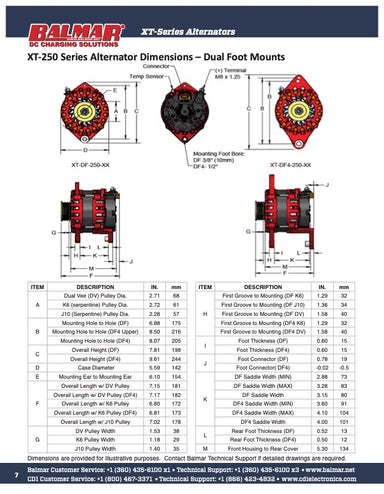
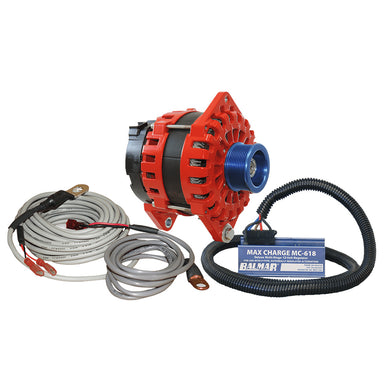 Save $171.00
Save $171.00



